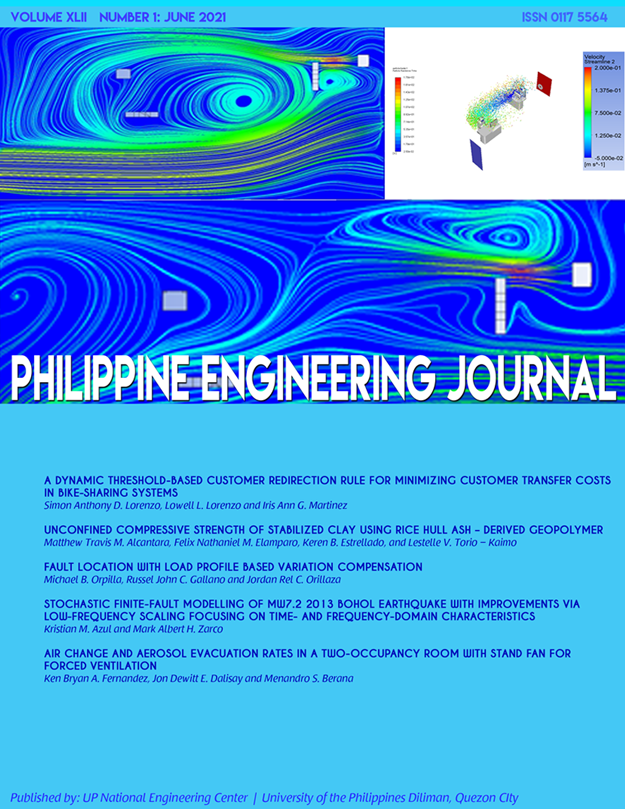Air Change and Aerosol Evacuation Rates in a Two-Occupancy Room with Stand Fan for Forced Ventilation
Abstract
In order to prevent the spread of COVID-19 through the airborne route for rooms without dedicated ventilation systems, stand fans can be used for forced ventilation through windows and doors. In this work, computational fluid dynamics (CFD) simulations of indoor airflow were performed using a CFD package to assess the effect of a single stand fan in terms of air change rate per hour (ACH) and evacuation rate of aerosols produced by two occupants. Four fan configurations were investigated in a room with one window and one door: (1) air intake near the door, (2) air exhaust near the door, (3) air intake near the window, and (4) air exhaust near the window. Additionally, two aerosol production cases were studied: (a) the occupant near the door solely produces the aerosols and (b) the occupant seated near the window solely produces the aerosols. Results show that all the configurations satisfy the DOLE guidelines for ACH of offices, and the intake configurations yielded about 2-4 times higher air change rates compared to the exhaust configurations. Remarkably, even though configuration 2 has the lowest air change rate per hour, it has the highest aerosol evacuation rate for case A. Although, this is undesirable for actual implementation since the door path is used by occupants going in and out of the room. Still, this study shows that the resulting air flow field and consequent aerosol transport is an important factor besides the air change rate when assessing the potential of spreading the disease.
Keywords – Ventilation, Indoor Air Quality, Particle Dispersion, Computational Fluid Dynamics, COVID-19


